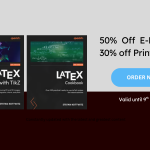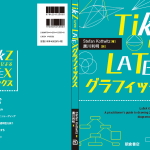On the second day of the conference, firstly all participants introduced themselves briefly with name and where they are coming from, because there were no badges resp. printed name tags, to be sure that everybody knows each other. Though many of the attendees are well known TUG members and regular participants, it’s especially good for first time attendees who did not get to know everyone on the first day.
The Program
Jean-Michel Hufflen started with “A comparative study of methods for bibliographies”. He briefly talked about the history of bibliographic tools, such as TIb, present problems such as lack of multilingual support and problems with mixing different input encodings. While some LaTeX packages extend bibliographic capabilities, such as natbib for author-date support and jurabib for short titles, there are now several BibTeX successors: biblatex, where formatting references is deferred to LaTeX and BibTeX is only used for looking up entries and for sorting, biber, Bibulus (which needs BibTeX for conversion to an XML format), CrossTeX (which enhances BibTeX cross-referencing mechanism) and finally he introduced MIBibTeX which is like an enhanced BibTeX with multilingual features, using XML as formalism and a new language for bibliographic styles.
Brian Housley presented “A class and style for producing flexible letters and page headings”. This class is based upon the standard LaTeX letter class, it redefines various commands and defines new ones for offering some extra useful features. For example, a user can specify key-words for invoking various styles of the heading, headings are always centered, and C5/C6 windows envelopes are supported. The class (hletter.cls) is not yet on CTAN, but will be soon available there.
Didier Verna made an extensive presentation “Toward LaTeX coding standards”. He explained that coding style is important to help people to read and understand source code. Besides readability it also concerns maintainability and extensibility. A consistent use of a coding style is even more important than the coding style itself. A problem is, many programmers are learning by example and by imitating existing legacy styles, further there’s not much support by editors regarding LaTeX coding style. A lot of packages are relatively small, and many are single-authored, which might be a reason that there’s no consistent style after so many years of LaTeX. Advice:
- Make use of tools and conventions
- Keep in mind
- Code layout: formatting, indentation, naming schemes
- Design: modularity, encapsulation
- Behavior: user interface, package interaction and conflict management
- Be social: accept collaboration and propose it
Special advice for layout:
- Be spacey, especially in math where blanks are ignored
- Indent when grouping by {}, \begin … \end etc.
- Use comments
- Regarding names: consistently use prefixes to avoid name clashes, postfixes where LaTeX automatically attaches prefixes
Frank Mittelbach spoke about “LaTeX3 architecture and current work in progress”. He began with a TeX time-line, until 2007 LuaTeX beta, 2012 LaTeX3 beta – perhaps. What happened before 2012? Why does LaTeX3 take so much time, after LaTeX2e had been released 1994? Probably it’s been too radical, too experimental, too unexplained, too huge, so just the intermediate LaTeX2e came out. He reviewed book production where many people cooperate: writing a text, putting it into a logical structure, designing the layout, implementing it and rendering it. Regarding design, we need design templates, even abstract designs distilled, which can be generically implemented, supporting parameters for various designs. For reuse and flexibility we need to separate user interface, design and coding, for high-quality results we need management of context dependencies. Frank gave an architecture overview of LaTeX3 which is a bit too complex to write down here, and he explained context defining syntax. His final slides showed activities of 2011 and an outlook.
Then we had a lunch break. Again, the lunch was outstanding. Afterwards we met for a chat, Kaveh talked about River Valley Technologies, technology and goals and also about the campus complex and the cooperation of RVT with the Self Employed Women’s Association. On this occasion, we also made a group photo of all the conference participants.
After lunch, Dave Crossland made is presentation via Skype: “Freeing fonts for fun and profit”. Why to do that? Obviously typeface designers usually make money by customizing fonts rather than by designing new fonts. Dave showed a lot of free typeface examples and explained some background to them. He designed the Cantarell font, published under the SIL Open Font License, 1.1. Dave was consultant for google, Google Web Fonts (www.google.com/webfonts) has already published hundreds of free fonts. Dave demonstrated its interface for using web fonts in your own website. Finally he introduced the FreeType Project.
Boris Veytsman and Leyla Akhmadeeva presented “Towards evidence-based typography: Experiment design” Boris began by introducing two books of Jan Tschichold, “Typography” and “The Form Of The Book”, which are somehow different in their style (serif, sans-serif, asymmetric, symmetric), thus preaching different things – what is right? Beauty is hard to measure. However, readability and understandability and typography parameters can be measured. Boris regarded
- Legibility and Readability, such as font size, uppercase and lowercase, using serifed fonts or sans-serif, line spacing and line width, layout
- Comprehension
Typography can influence reaction speed, somehow persuasion and impression about text and author. Leyla explained how they make experiments with students and undergrads for studying readability. TeX has been chosen as layout tool, font parameters were changed by MetaFont for learning the effect on readability. This is still an ongoing project, its goal is to collect a database showing how readability and understandability depend on typographic parameters, restricted to Cyrillic texts.
Karel Skoupy followed with with “Typesetting fancy multilingual phrase books with LuaTeX”. He introduced his company Lingea, which also typesets dictionaries using TeX, and also phrase-books based on multilingual databases and conversion tools. In such cases TeX shows his strengths in batch processing and database publishing. Those books have a fancy graphical design, which is generic and can be used for various languages with minimal human intervention. Karel gave some books to the audience so we could have a close look. He explained the book’s structure, and mentioned the challenges, such as box balancing, grid lines, mixed alphabets, Unicode encoding, Asian OTF fonts, mixed direction typesetting, advanced language configuration (other than babel offers), rich content structure and table design. Karel used LuaTeX with Lua scripting and generic packages for records and tables, which he developed for this project but which still are proprietary, as decided by the publishing company.
Finally, Dominik Wujastyk presented “Typesetting Sanskrit in various alphabets: XeLaTeX, TEC files, hyphenation, and even XML”. Here XeTeX’s capabilities are very important, such as Unicode input and output in PDF, access to system fonts, string preprocessing, and multilingual text support by polyglossia and fontspec. Topics of this talk were both displaying Sanskrit and also proper hyphenation in Sanskrit.
Update: The Evening
After I wrote this blog entry, we met for a banquet. The participants who stayed in various hotels got transfers to a beach hotel. There we had a delicious diner in a very nice atmosphere outside next to the pool.
Because I’m flying home to Germany tomorrow, directly after the conference, I probably will talk about day 3 on Saturday.


